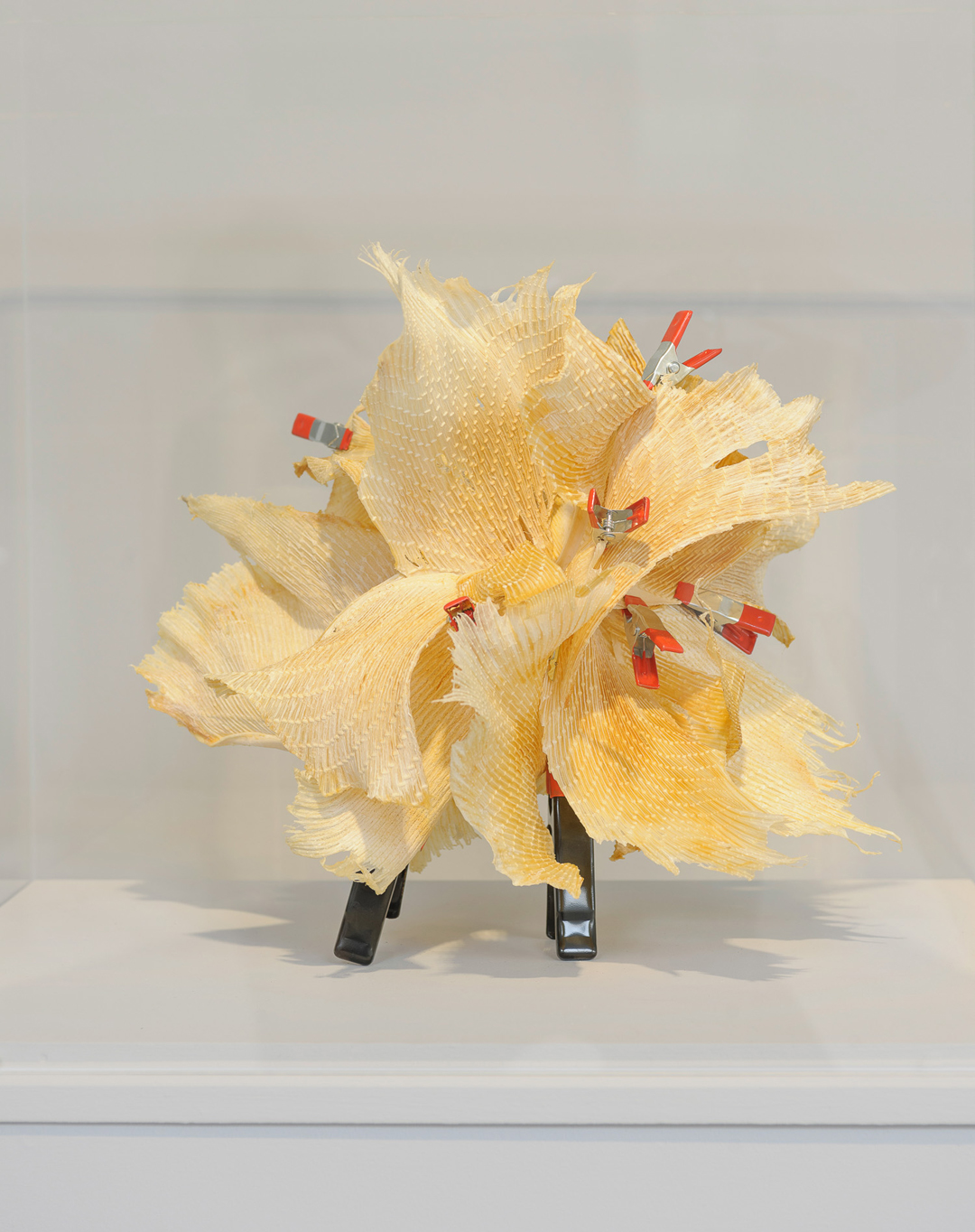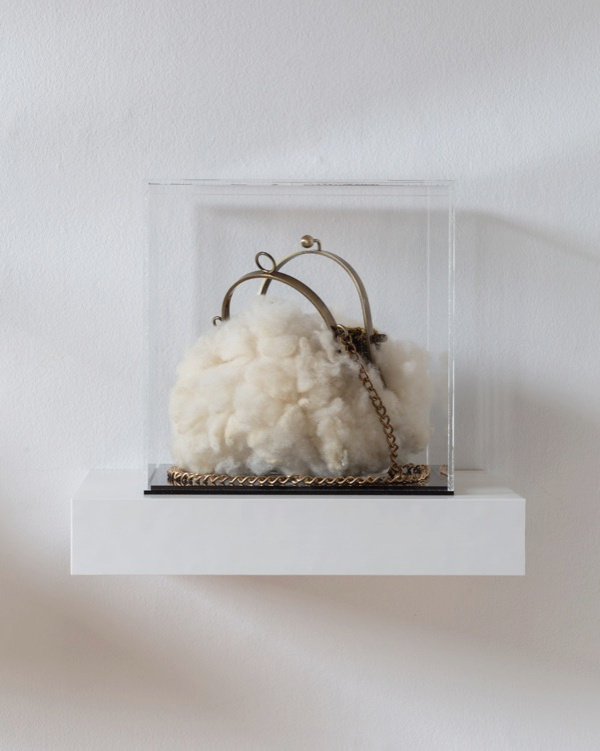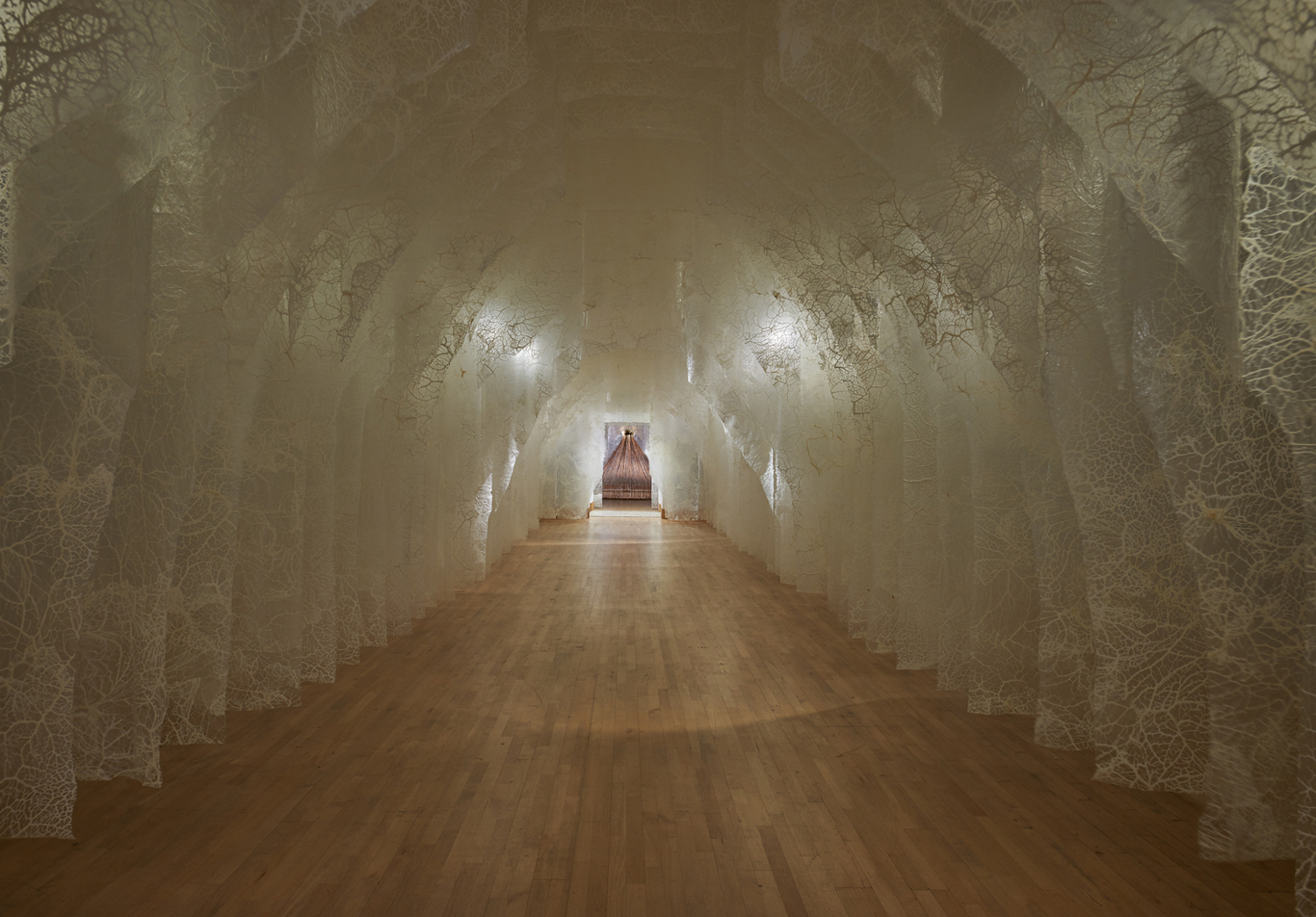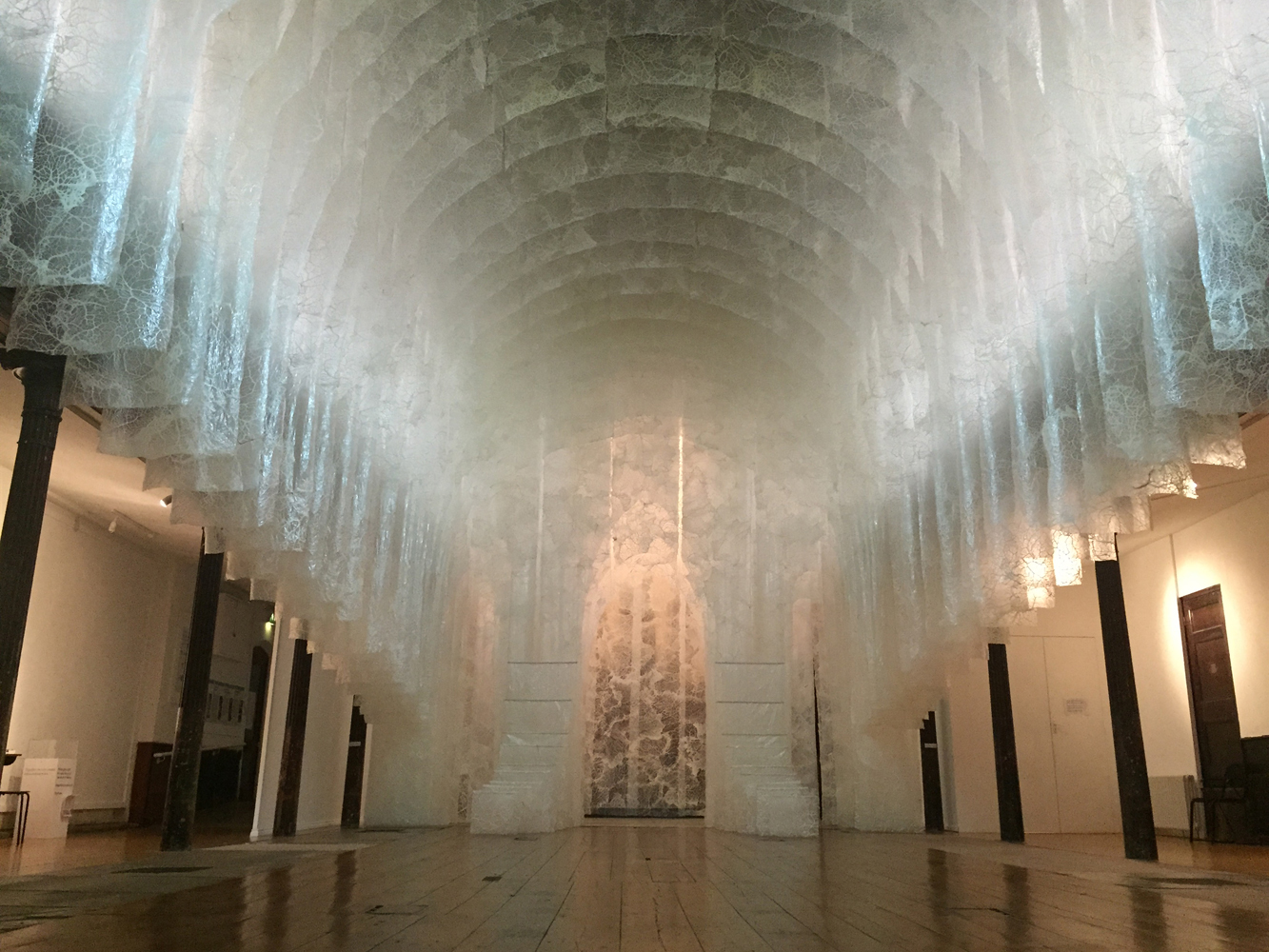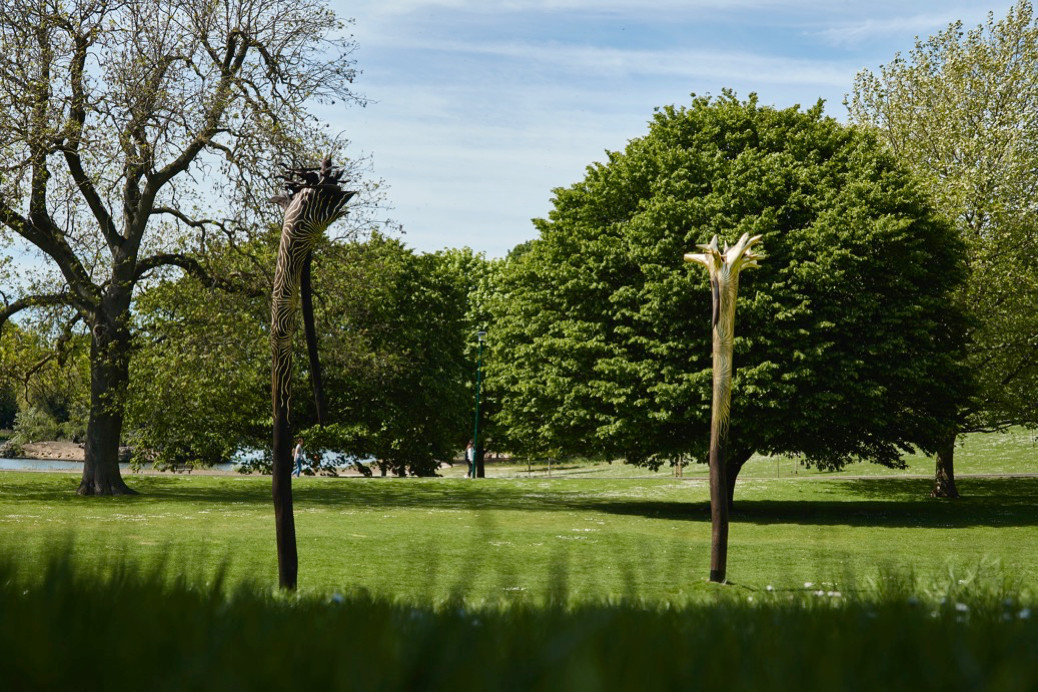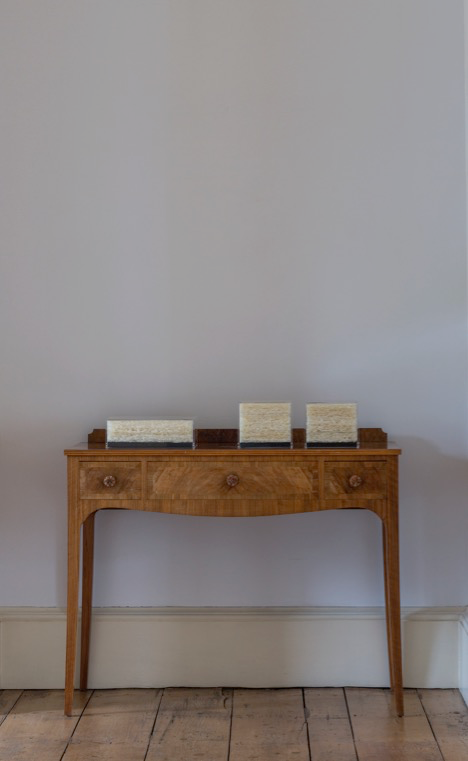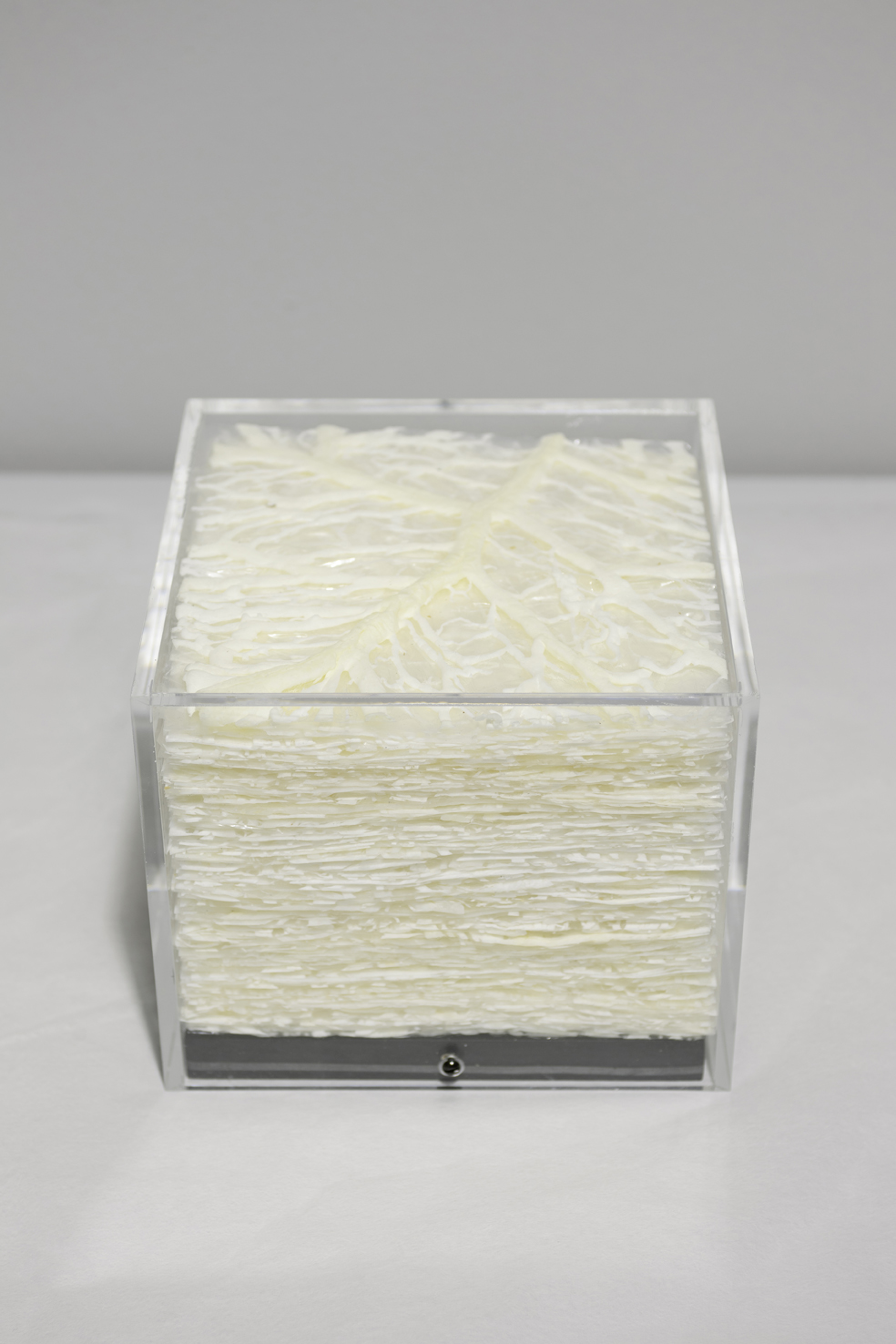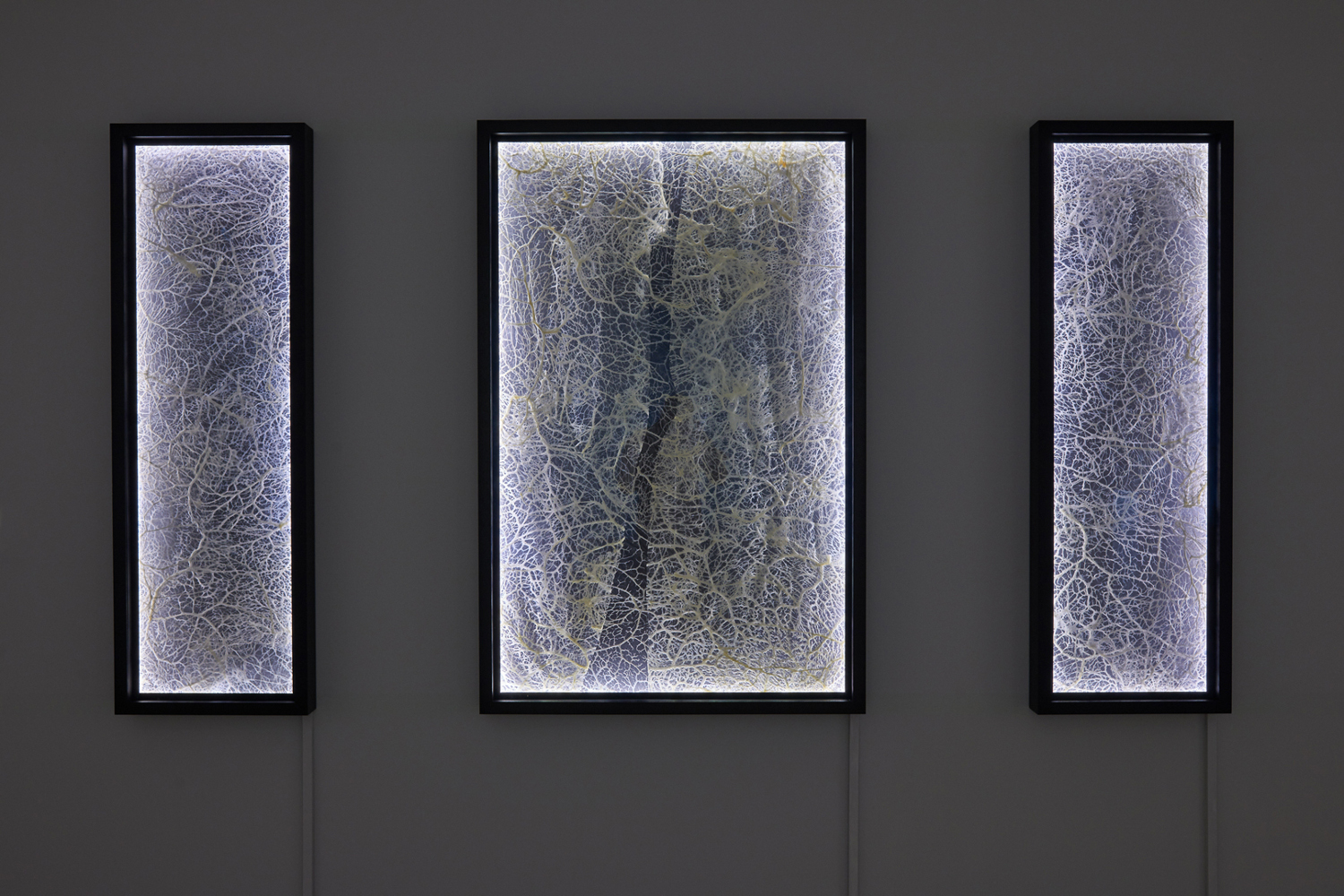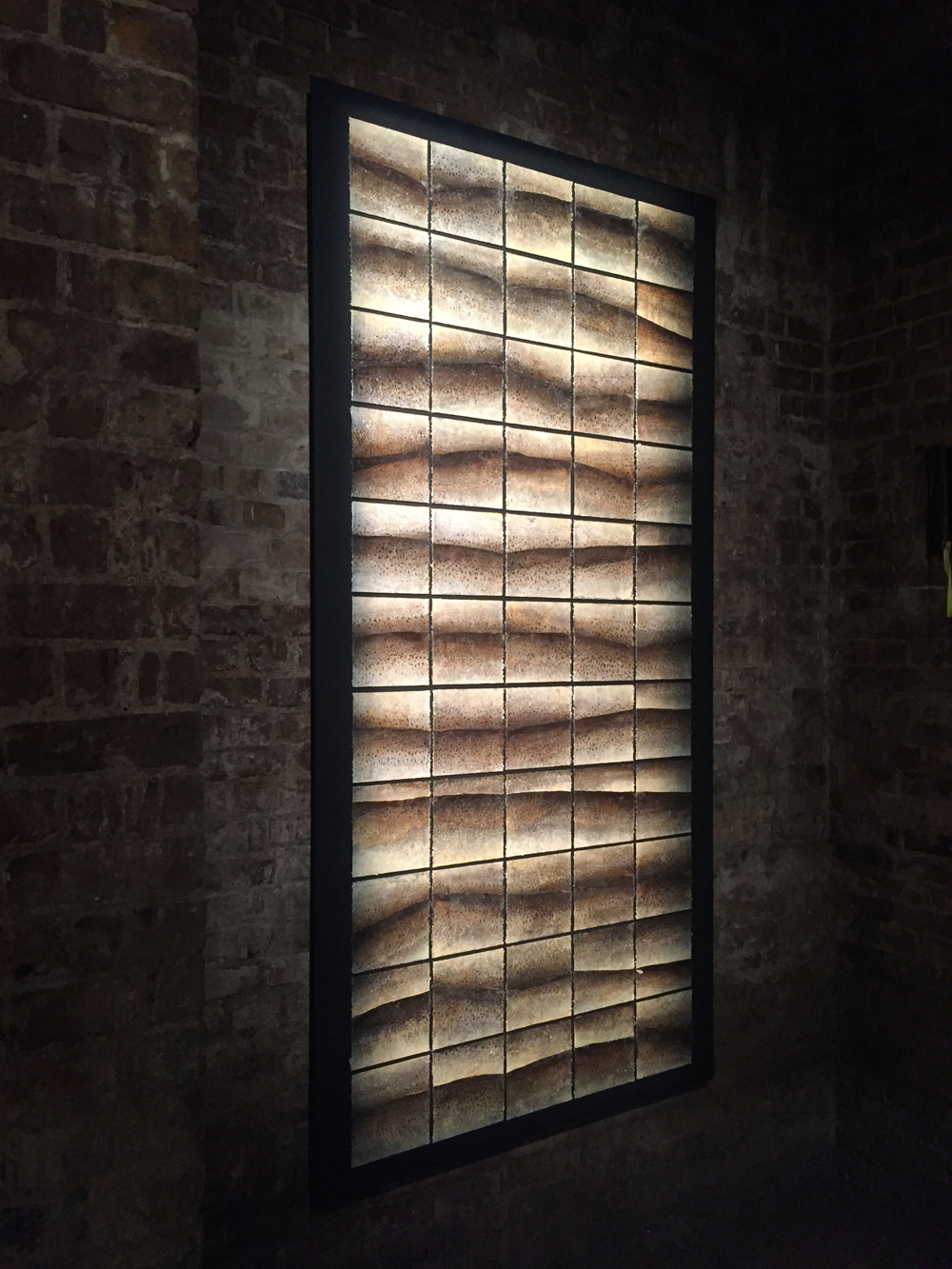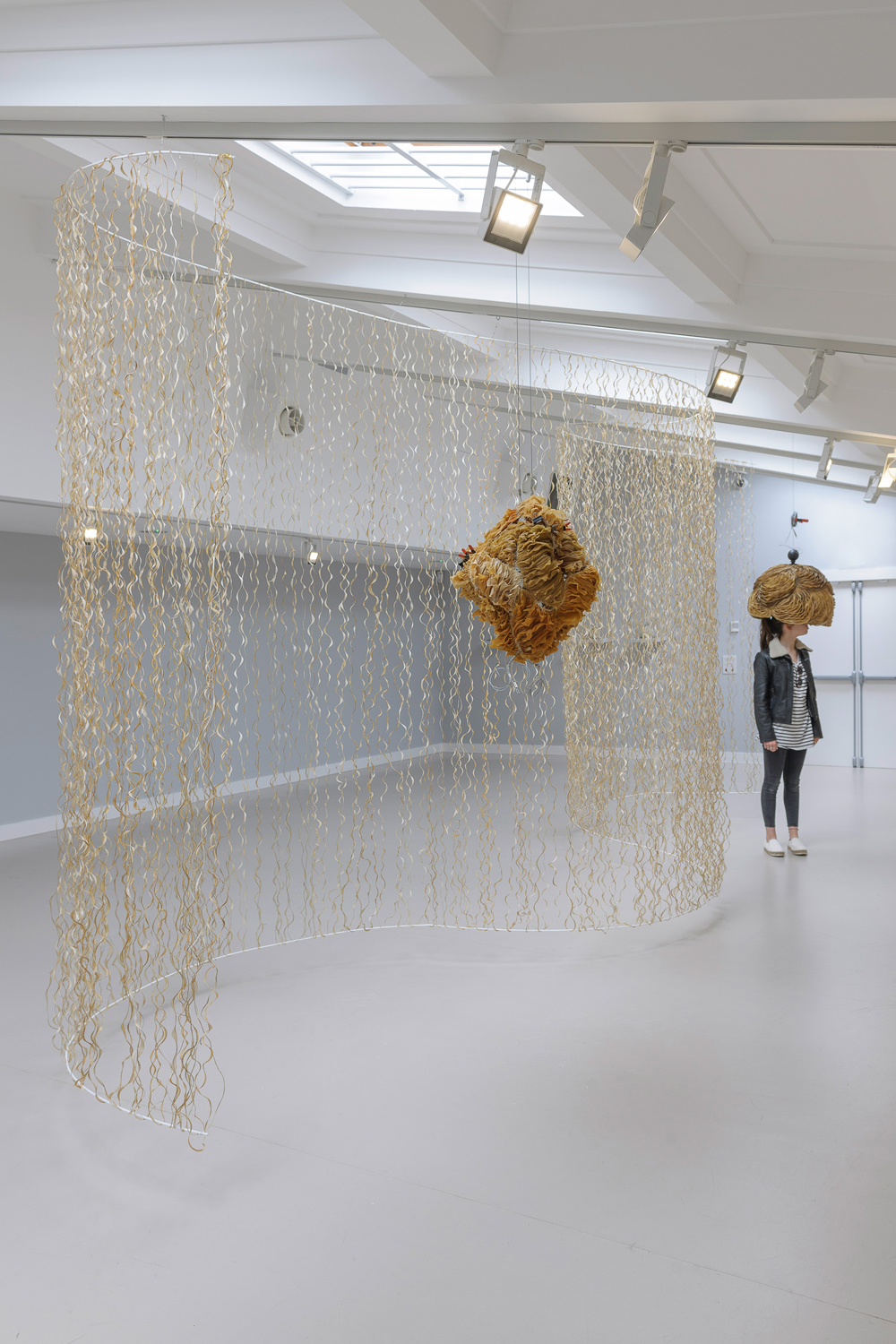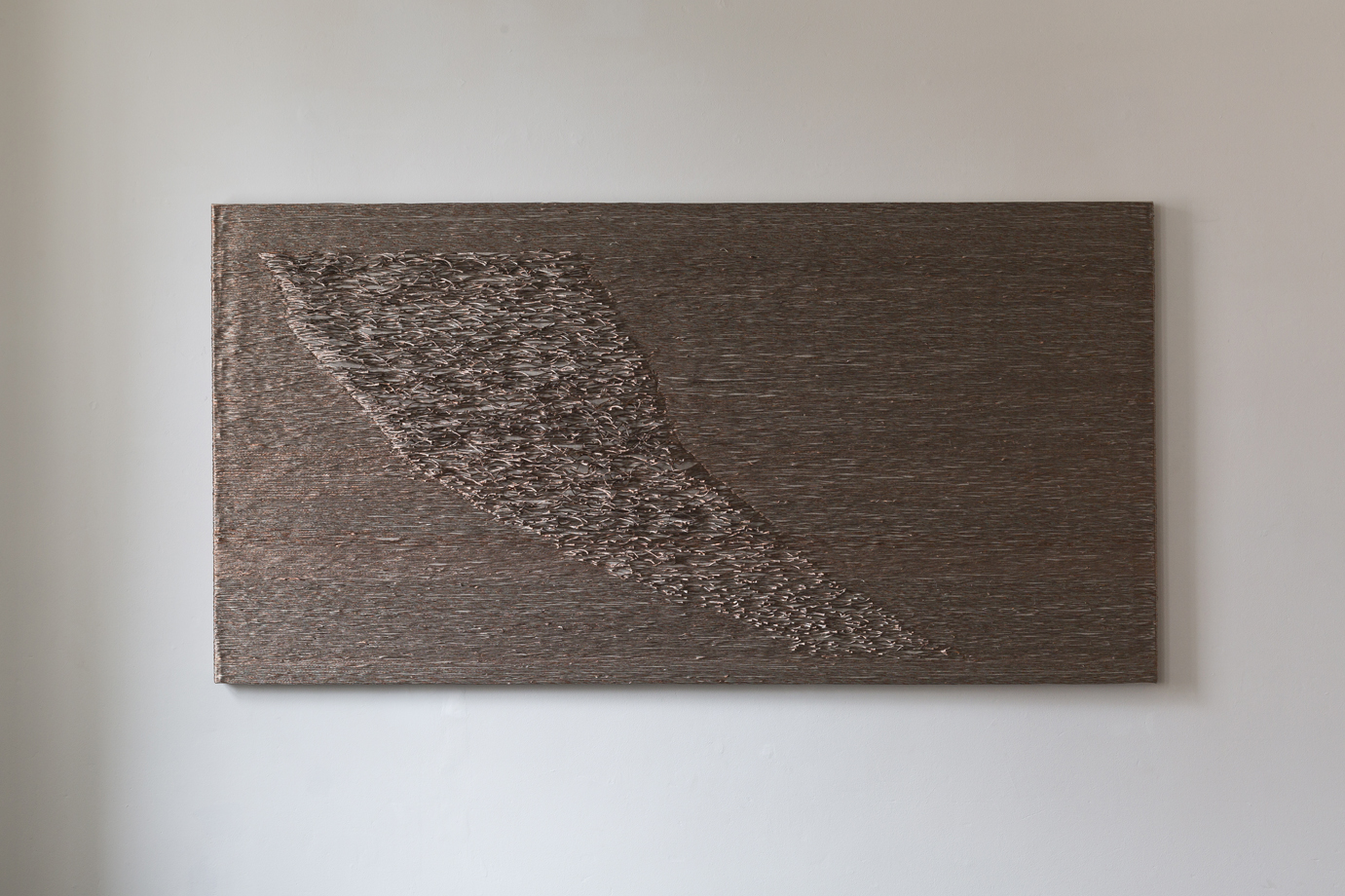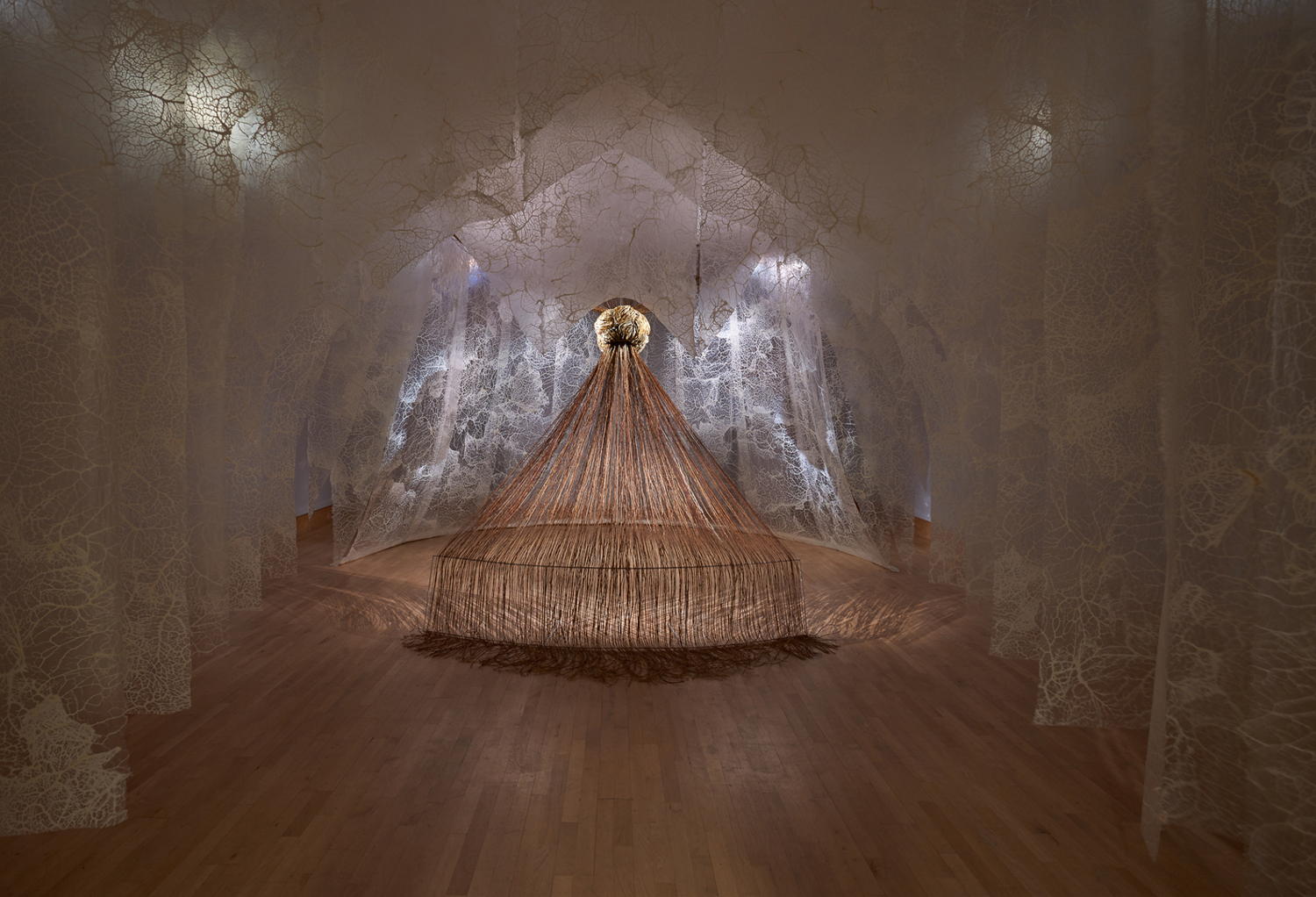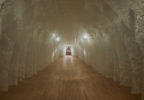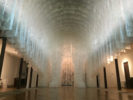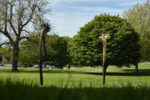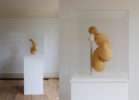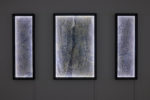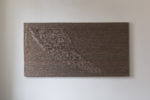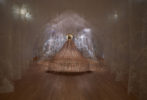Elpida Hadzi-Vasileva
Forti Micol (ed.), In the Beginning … the Word became flesh, cat. exh., Pavilion of the Holy See at the 56th Venice Art Biennale, Rome, Gangemi Editore, 2015
Silentio Pathologia, Pavilion of the Macedonia at the 56th Venice Art Biennale, 2013
→Haruspex, Pavilion of the Holy See at the 56th Venice Art Biennale, 2015
Macedonian visual artist.
Elpida Hadzi-Vasileva is a Macedonian-born contemporary artist. She graduated from the Glasgow School of Art with a BA(hons) Fina Art in Sculpture in 1996 and earned her MA in Sculpture at the Royal College of Art in London in 1998. She works in different media such as sculpture, installation, video, sound, photography and architectural interventions. The main focus of Hadzi-Vasileva’s work is the connections between research of each installation’s site specifications and science, history, technology, community, heritage, nature, landscape, ecology and cosmology. Very often she works with non-traditional materials, using specific technologies of material preparations, pre-investigated in laboratories with scientists and biologists.
E. Hadzi-Vasileva’s earlier interest was in the floral world and then, after several years, she started her experiments with the fauna. One of the characteristics that characterize her oeuvre is “knitting” (floral pieces that are lifeless and thrown into nature, such as branches, leaves, grass, trees, roots and planks; or the stomach of a cow, cocoons, rat and fish skins and other waste materials from the meat industry), creating beautiful constructions as individual installations or interventions in interior architecture. Within the first group of artworks, dealing with plants, such as Connection, (1995); Re-evolution (1996); Revival, (1997); Ambush (2000), she came up with the initiative to restore life to broken branches and damaged plants, by placing them in new ambient contexts. On the other hand, in the “animal-based” works, for example Epidermis (2001); Butterflies in the Stomach (2008); Fragility (2015); Making Beauty (2016); Angels and Animal Delights (2017), etc., by using internal or external parts of animal origin she creates a kind of “woven lace” by hand. This type of recycling restores dignity to the biological and, at the same time, tries to raise awareness of regenerated forms of existence. It also has ramifications for pharmaceutical giants that experiment not only with animals, but with humans as well, inventing viruses and creating other dangerous forms of biological weapons that threaten existence and management of the world. The complexity, multilayeredness, intertexturality, transhistoricism, existentialism of her works, certainly entices the viewer and never leaves them indifferent. Some like it, some not, seemingly the same as the definition of the aesthetics of the ugly in “On Ugliness” by Umberto Eco, who concludes that ‘One man’s trash is another man’s treasure’.
The Vatican commissioned Hadzi-Vasileva as part of the Holy See Pavilion at the 56th Venice Biennale in 2015, while at the Venice Biennale in 2013, she represented Macedonia. In 2017 she received Grand Prix, Osten Biennial for Awarded Authors in Macedonia, and in 2016 the Golden Osten Award, at the Osten Biennial of Drawing in Macedonia. She has also received awards from the Wellcome Trust, the Pollock-Krasner Foundation, the Arts Council England, and the Ministry of Culture of Macedonia. Her artworks have been commissioned and developed in urban and rural sites, in interior and exterior spaces, including Danielle Arnaud Gallery, London; Fabrica Gallery, Brighton; Pied à Terre, London; Gloucester Cathedral, Bennachie, Aberdeenshire; L’H du Siège, France; Kilmainham Gaol Museum, Ireland.
E. Hadzi-Vasileva’s artworks are in public collections including Luxelakes a4 Museums, Chengdu, China; The Vatican; Office of Public Works, Dublin, Ireland; Križanke, Ljubljana, Slovenia; Casoria Contemporary Art Museum, Napoli, Italy; MIMA, Middlesbrough and New Hall Art Collection, Cambridge and private collections around the world.



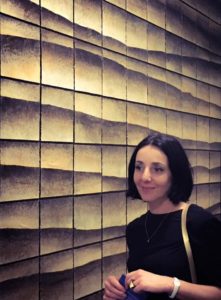
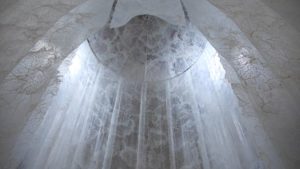 Fragility Installation (2015) by Elpida Hadzi-Vasileva
Fragility Installation (2015) by Elpida Hadzi-Vasileva 